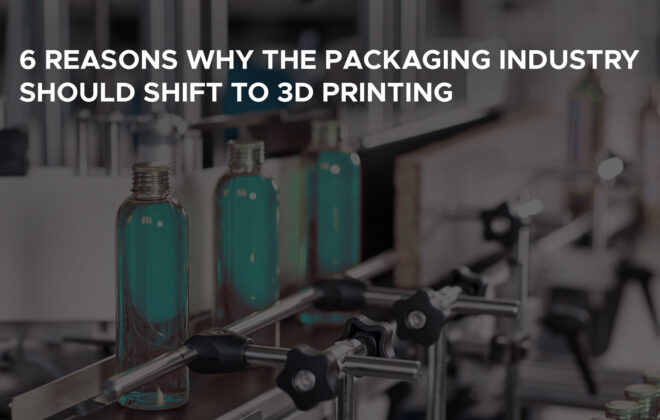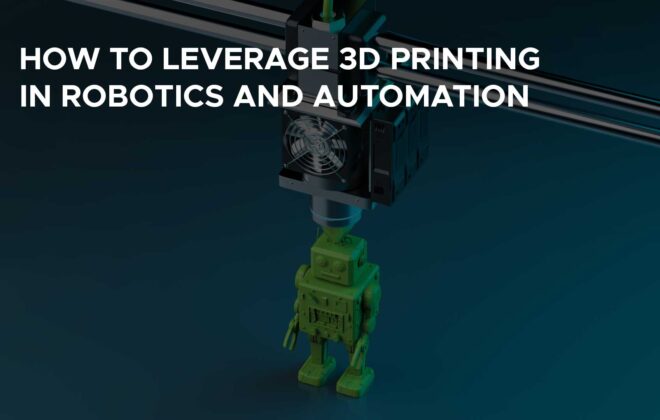How 3D printing is transforming the industries in new ways
In our last blog we talked about the concept of additive manufacturing and what opportunities it offers. Today we would like to take you further into the journey by taking a deeper dive into the industries where it is used today and the trends in 3D printing.
How is additive manufacturing used today?
All great technologies start with early adopters. The growth in 3D printing started when the adoption of technology started percolating beyond the hobbyist. But in recent years 3D printing has also become an acceptable technology for usual manufacturing process. However, not all industries have discovered the huge opportunities yet, but there are some industries that are undoubtedly transforming due to 3D printing. Let’s have a look at, how those industries benefit from 3D printing.
Automotive
In the automotive industry companies benefit from rapid prototyping and a fast go-to-market using 3D printing. The possibility to manufacture lightweight products makes 3D printing also attractive for the automotive sector. General motors e. g. opened an own facility dedicated to additive manufacturing. The printers will mainly be used for rapid prototyping, which speeds up the vehicle development and dramatically cuts down the costs related to designing a new car. Moreover, lightweight tooling and car parts will partly be produced using 3D printing.
Consumer Goods
In the Consumer Goods market 3D printing opens the way for innovation. More innovative and complex designs are possible with the help of 3D printing. Moreover, in this approach concept modeling and prototyping become more accurate and functional as prototypes can be quickly tested and improved. The lower time-to-market as well as cost efficient low volume production offer huge benefits to the Consumer Goods market. Jewelry is just one example, where 3D printing is used in the consumer goods industry. Jewelers can now use a CAD software to create the designs and print them using a high-resolution 3D printer. The forms can also be casted in a mold to follow the traditional investment casting flow afterwards. With 3D printing, designs can easily be preserved, modified, and recreated.
Aftermarket
The aftermarket is another application that is getting more and more interesting for 3D printing. Many spare parts for long-term machinery, e. g. in the construction sector, are often expensive to produce, not available or the storage costs of those slow-moving parts are just too high. With on-demand 3D printing, the designs are stored in a digital inventory, ensuring a lifelong availability of all spare parts. When a part is needed, it is printed on-demand and decentral, saving logistics costs and long lead times.
Deutsche Bahn for instance, uses 3D printing for the fast production of components like headrests, fan propellers or even small components like parts for their coffee machines. In the past, there were situations where the parts from suppliers had long delivery periods or weren’t even available anymore. Depending on the criticality of the part this often led to idle times for their trains. With the use of additive manufacturing, Deutsche Bahn produces spare parts on-demand and in short time, thus reducing the idle time of their trains to a minimum.
Medical and Dental
The medical industry has recognized the customization benefits that 3D printing offers for them. This is a classic scenario where one size indeed does not fit all. Let’s take for example the prothesis market, both dental protheses and body protheses. 3D printing makes it possible to produce crowns, trays, prosthetic hands etc. adapted to the needs of each patient. Not only the possibility of individualized solutions and customization brings benefits to the industry, but also the time reduction of creating a prothesis from several weeks to less than a day.
NuVasive, a medical device manufacturer e. g. 3D prints titanium implants that have been optimized for the right porosity for bone fusion. With additive manufacturing they generate microporous surfaces and optimized lattices for better spinal implants.
Aerospace
In the aerospace industry, 3D printing gives the possibility of producing complex parts with better performance features, while in the same time cutting costs and time of production. Also, decentralized manufacturing offers a huge benefit, shown for instance by NASA. Since 2014 3D printing is used in their spaceships. If parts like bolts, wrenches or even beams, are breaking during a space mission, the astronauts need a spare part for that. While this was a big challenge in the past, now 3D printing comes in and the parts can be printed directly in the spaceship.

With the list of industries that are adopting 3D printing on a rapid scale, there are still many more hidden gems to explore. Some nice use cases that popped up in the last few years were in the construction sector, the maritime sector, architecture and even the food industry, a very futuristic case, where food is printed using 3D food printers. But why is 3D printing getting more attention recently? Let’s have a look at the trends.
What can we expect from 3D printing in the future?
Based on the annual report compiled by sculpteo, there are four mayor trends that make additive manufacturing more important and accessible to the industries. These four trends are:
1. Growing material choice
While right now the choice of material is still restricted, lot of research and new 3D printing technologies, are pushing new material choice rapidly. This in turn makes the production of a higher variety of products possible. Material is getting more affordable and the quality of the printed parts will improve drastically, also in post-processing. Parts could even be printed using several materials, thereby making the range of possible products even wider.
2. Technology Evolution
Another point is the technology evolution, as the usability of software and printers is improved. New innovative printers are being produced, that improve the speed and quality of the product. As a result of recent advancements there are printers, that work with two extruders (instead of one) manufacturing the part, and reducing the production time drastically. We can even talk about a 3D printing mass production in the future, when considering factors like a higher printing speed.
3. Affordable 3D printing
Top analysts agree that, as adoption steadily increases, the total 3D printing market will continue to double in size approximately every three years. According to Statista, the global market will reach 40,8 billion U.S. dollars in 2024. With the higher amount of possible materials, this will indirectly lead to lower prices of material and printers. As new printing technologies are evolving, 3D printing is getting more efficient and less cost intensive. Also, the trend goes to lower post-processing costs, making 3D printing even more accessible for companies.

https://www.statista.com/statistics/315386/global-market-for-3d-printers/
4. Sustainability
There are more and more biodegradable and bio-sourced materials in 3D printing and materials like PET can be recycled and reused. Also, the material waste during 3D printing is considered less than using subtractive manufacturing processes like CNC. Moreover, the possibility of an on-demand and local production can reduce the environmental costs in logistics. Better energy efficiency and the use of renewable energy is a trend that could make 3D printing more sustainable.
3D printing will change the world we live in
3D printing is getting more attraction in the industries and there are a lot of trends that make the technology even more accessible to companies. Altogether, we feel very confident that 3D printing will change the world we live in. Replique offers an end-to-end solution for companies who want to produce on-demand spare parts for low-to-mid volume series efficiently and in high quality.
Using our digital platform and network of 3D printing service bureaus, you don’t need to build up your own infrastructure and 3D printing expert knowledge. We offer everything from part identification, printability check, all the way until delivering the 3D printed part at their door.
Are you interested to know how we can help you? We are just a click away: info@replique.io
Featured image sourced from unsplash.com
Categories
- 3D printing industries (6)
- 3D Printing Materials (1)
- Basics (3)
- News (1)
- Point of View (10)
- Press (20)
- Press (20)
- Sustainability (3)
- Technology (6)
- Uncategorized (1)
- White Paper (1)


